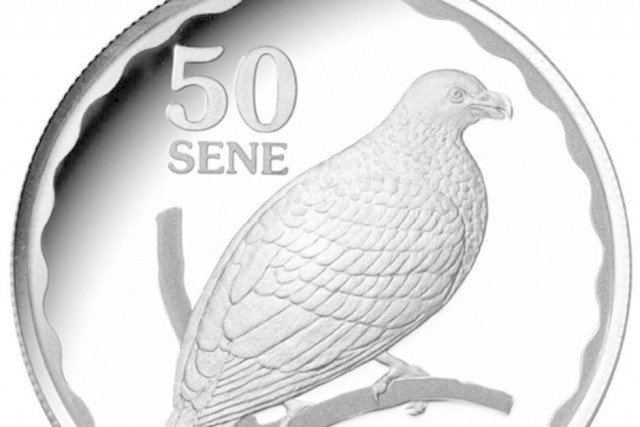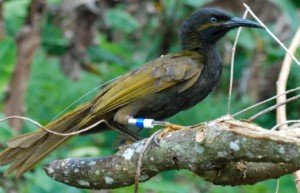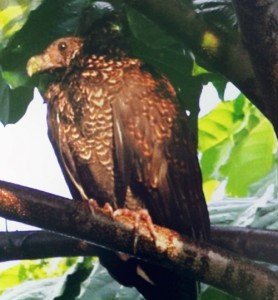
It’s always tragic when a species goes extinct. But that tragedy is compounded when the species at risk is a country’s national bird. (Americans of a certain age will recall how close their country came to losing the Bald Eagle.)
Sadly, that is indeed the situation in Samoa, where the Manumea, or Tooth-billed Pigeon, numbers fewer than 200 individuals. Fortunately, scientists now have proof that the bird, which lives only on two Samoan islands and is distantly related to the Dodo, isn’t yet extinct. A field team recently discovered a juvenile Manumea (and documented it with photographs). The sighting suggests that for all its struggles with habitat loss and hunting, the species is still managing to reproduce. (Image of newly discovered juvenile Manumea by Moe Ulli)
 The Manumea isn’t the only Samoan bird on the brink, however. Conservationists are also concerned about the equally endangered Ma’oma’o, a large honeyeater threatened by predation. Efforts to save both species, however, are complicated by a lack of information about the birds’ behaviors, food sources, breeding rates, and predators. (Image of banded Ma’oma’o from Samoanbirds.com)
The Manumea isn’t the only Samoan bird on the brink, however. Conservationists are also concerned about the equally endangered Ma’oma’o, a large honeyeater threatened by predation. Efforts to save both species, however, are complicated by a lack of information about the birds’ behaviors, food sources, breeding rates, and predators. (Image of banded Ma’oma’o from Samoanbirds.com)
Our South Seas correspondent Clare (currently enjoying fun in the sun, unlike those of us in the northern hemisphere) tipped us off to a crowd-funding campaign aimed at giving scientists more resources to study and preserve both the Manumea and Ma’oma’o. You can learn more at the project’s Indiegogo page. For more info on both species, check out this video from Samoa’s Ministry of Environment.














Leave a Comment